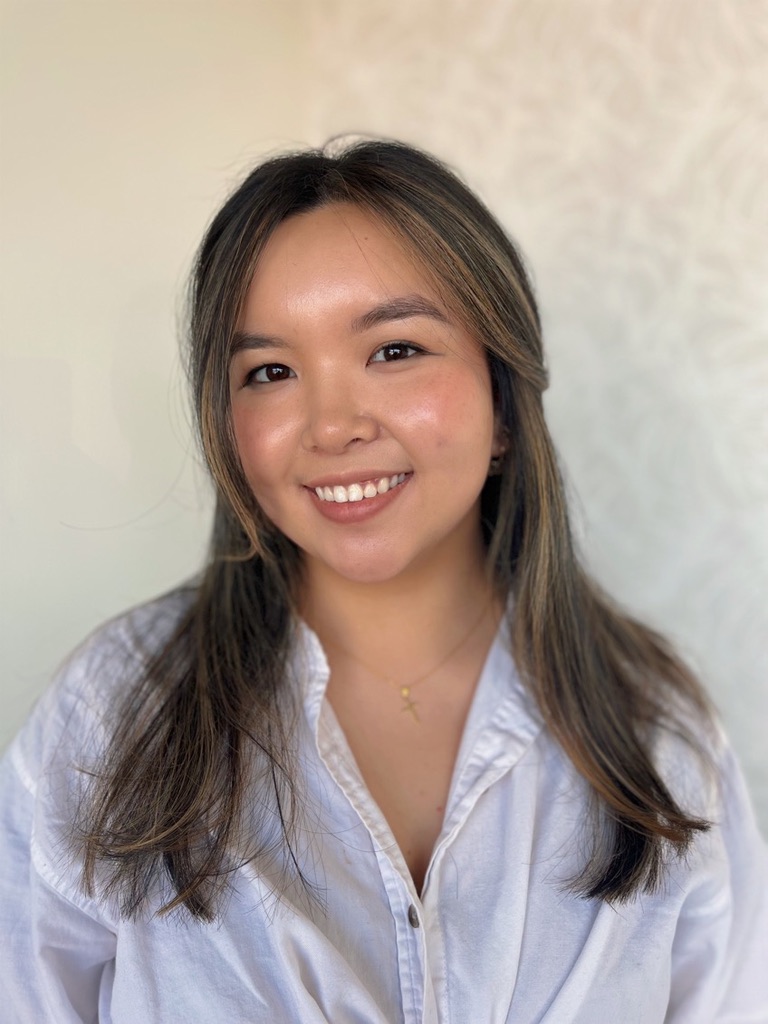Interview with WGS student An Ha.

An Ha recently published a co-authored essay, “What Color is My Voice? Academic Writing and the Myth of Standard English” through Writing Spaces. With her co-authors, Kristin DeMint Bailey and AJ Outlar, Ms. Ha’s work brings much-needed attention to the intertwining of language, identity, and power within the context of racism and “standard” English. Reflecting on their own writing for college courses, Ms. Ha and Mr. Outlar invite students to ask themselves,
“Whose voice do I hear in my writing, and why? What does this voice reveal about my identity as a writer, and how do I feel about what I uncover? What might I want to do more or differently?”
Kristin De Mint Bailey, An Ha, and AJ Outlar, “What Color is My Voice? Academic Writing and the Myth of Standard English,” Writing Spaces, 5, no. 1 (2023): 63.
The following is an interview with Ms. Ha regarding her research, writing, and feminist theory.
What is “voice,” and why is it important?
“Voice is essential to the human experience. It is an amalgamation of our lives and a means of storytelling and connection. We acquire voice as we grow; slowly, the internal voice translates to the external. Voice is culture as it is privilege. Some of us have voices that get lost in translation. Voices that fall on ears that are closed to stories that don’t center their own, that don’t center Whiteness. This. This is why voice is important. Black voices, brown voices, loud voices, soft voices, all voices — deserve to proclaim their existence. When we center only one voice, we lose so much richness, and we silence the marginalized in their declaration of space.”
What did you find meaningful about this research and publication?
“This topic has yet to hit the mainstream. There are still thousands of BIPOC in schools that believe they are ‘bad writers.’ This chapter, however profound, is still only a baby step in the change that needs to happen for students everywhere. I am immensely grateful that I had an English professor who used her Whiteness to amplify BIPOC voices. I am also grateful for the creative freedom I was given at 19. Reading the chapter back now, I can hear my 19-year-old voice, her excitement, her passion, her spunk, and that’s precisely what this chapter should do.”
What would you say to a Hope undergrad who is considering doing research with faculty?
“Partnering with a faculty member to dive deep into topics that make you think is an incredible opportunity. You work alongside someone who acts as a guide, a mentor, a peer, and an investor in your education. I had no idea where this Writing Spaces chapter would take me, but I’m so glad I took a chance to learn along the way.”
How do you see feminist theory connecting with this research?
bell hooks reminds us that ‘Work by women of color and marginalized groups of white women (for example, lesbians, sex radicals), especially if written in a manner that renders it accessible to a broad reading public, even if that work enables and promotes the feminist practice, is often de-legitimized in academic settings.’ For this work to impact our audience (students in college-level English classes) we must understand that valid writing does not have to be ‘scholarly’ or ‘academic’ or any other thinly veiled pseudonyms for White. ‘What Color Is My Voice‘ allows for this space in writing, where making these concepts more accessible to the general public enables the faculty and students to enact social change.”


Loved reading this and hearing the passion behind the work of representation of diverse voices in realms of literature and writing spaces. As a person of color, this topic resonates and I believe it is so important to address this issue. Representation is more than just the physical attributes of people, it encompasses the intersectionality of their being and all that makes them who they are. Great work and looking forward to what’s to come from this project!!